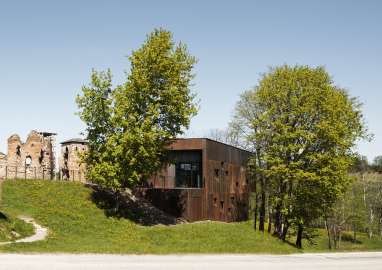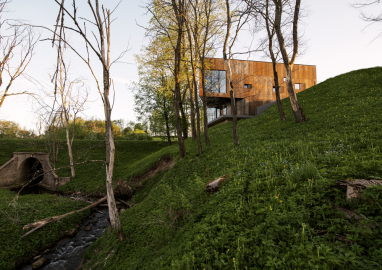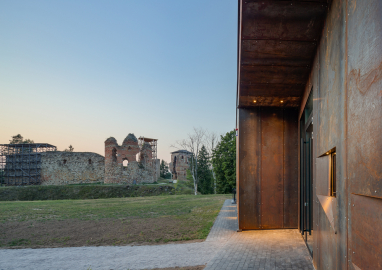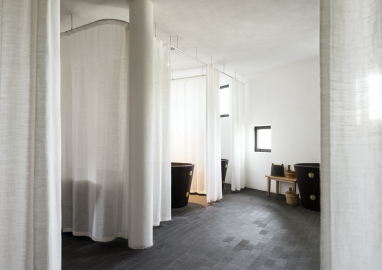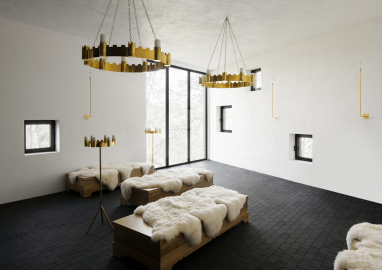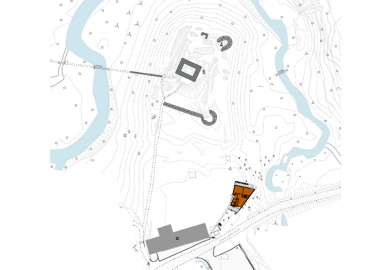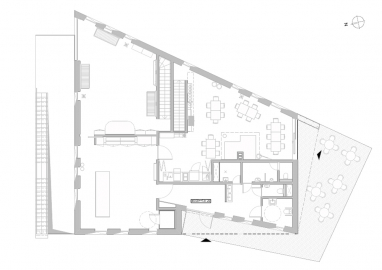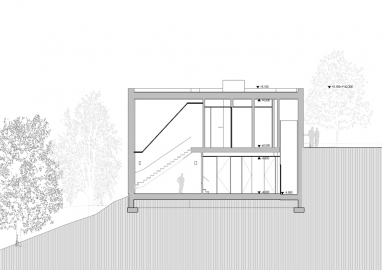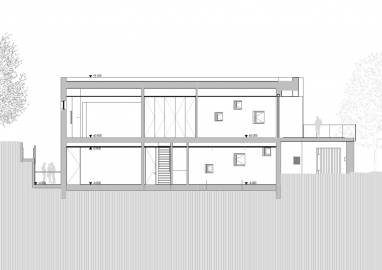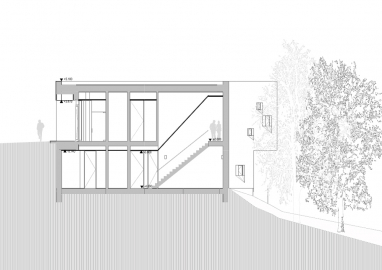Pilgrims’ House in Vastseliina
The Pilgrims’ House complements a medieval castle complex in south-eastern Estonia as a modern addition intended to accommodate a public visiting centre, offering a look into medieval life and an opportunity for self-reflection.
In south-eastern Estonia, a traveller ascending the steepish slopes of the ancient glacial valleys carved by the Piusa river and Meeksi stream will reach a complex of buildings including the ruins of a 14th-century castle, an old pub house and the modern Pilgrims’ House. The Episcopal Castle in Vastseliina is a venue imbued with history.
The castle complex, which used to be a popular pilgrimage destination after a miracle was reported to have occurred there in 1353, has now been revived as an experience centre to exhibit the medieval mode of living. The Pilgrims’ House by KAOS Architects was completed in 2018 as a recent addition to the castle ensemble.
The concept of the Pilgrims’ House has been shaped by the historic location, the picturesque scenery and the meditative realm of pilgrimage. The house has been nested onto the slope and designed so as to avoid blocking the view of what is left of the castle. The modern building is distinguishable though respectful to the old and remains partly veiled by the greenery during the summer period, reaching away from the castle ruins and jutting out towards the stream in the valley.
For KAOS Architects, this building was a pilgrimage to an architectural vision delicately balanced between imitating the historical atmosphere and responding to modern conventions. This has resulted in a notionally medieval touch, featuring high rooms and doors, seemingly mural stairs and secret niches, brick floors and plastered interior walls. The small window apertures here and there in the mostly blind walls, reminiscent of early castles, offer scenic views, the finest of which are framed by larger windows. The reddish brown weathering steel fabric of the Pilgrims’ House is aimed at toning in with the red brick and granite of the castle ruins.
The two oppositely arranged stairs can be used for an infinitely winding journey through the building without a need to turn back, and the ascetic minimalism of the interior invites the guest to stay in the moment and retreat from the world’s hustle and bustle for a while.
The general monochrome aesthetics let the old and the modern blend into each other, highlighting the medievally dressed personnel, foods and drinks. On the walls, black-and-white graphics inspired by old engravings serve as windows into the medieval world.
The structure is formed partly of monolithic iron concrete and partly of concrete blocks. The exterior is covered with weathering steel. The building is equipped with modern and energy-efficient technical systems. The construction works were costly because of the custom-made solutions and the building’s position on a steep natural hillside.
The interior features black brick floors and plastered walls and ceilings, which are partly covered by black sheet metal. The supporting technical equipment is hidden behind the closed doors of auxiliary rooms or storage spaces, barely perceivable in the building, if at all.
The weathering materials of the exterior and the interior will gain beauty with time.

